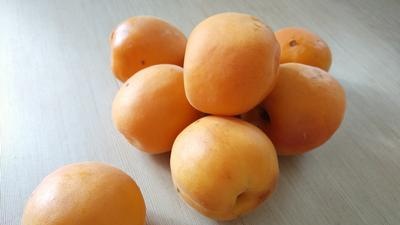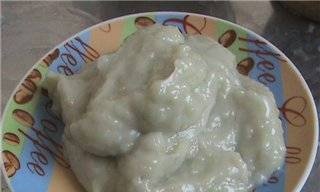|
 What do you know about banana? When this question was asked to Japanese students, one of them wrote the following: What do you know about banana? When this question was asked to Japanese students, one of them wrote the following:
“Banana is an extraordinary fruit! It is designed in the same architectural style as the esteemed sausages. The only difference is in the skin. We eat it at sausages, but it is not recommended to do this with bananas. Perhaps the following is also interesting. While eating, we hold the banana with the end up, and we eat the sausage from the plate. At first, a banana turns green, then turns yellow, and the sausage, as it was of an indeterminate color, like a terrier, such flesh sealed the throat. New food quickly set the teeth on edge and annoyed. Experience prompted him to drink water, and subsequently he warmly recommended this method to others.
Bananas then seemed to him biscuit or ice cream.
True, he did not specify what varieties he ate. Of the 300 varieties, not all are sweet. There are also completely savory, and when mature, they are hard, like raw potatoes. They are cooked like potatoes: they bake, boil and even make flour. But fried in oil are considered especially tasty. Then they puff up like pancakes and very much resemble them with their crispy crust. The locals are more fond of just such a savory "kitchen" banana.
 However, to bring the fruit of paradise to a condition (paradise - a specific name) is not always a simple matter. There is a story about a European who, once in the tropics, started a small plantation, having learned that growing bananas is easy and cheap. He stuck the cuttings into the ground and after a year or two was already admiring the huge bunches of fruits. On each trunk, as expected, one bunch flaunted in the height of a person. He took the crop unripe when the buyers arrived, and left a little for himself to ripen on a tree (if you can call a six-meter grass tree). That will be the aroma! Well, if the imported ones from the distant lands smell, then what smell should ripe fruits have on the spot! However, to bring the fruit of paradise to a condition (paradise - a specific name) is not always a simple matter. There is a story about a European who, once in the tropics, started a small plantation, having learned that growing bananas is easy and cheap. He stuck the cuttings into the ground and after a year or two was already admiring the huge bunches of fruits. On each trunk, as expected, one bunch flaunted in the height of a person. He took the crop unripe when the buyers arrived, and left a little for himself to ripen on a tree (if you can call a six-meter grass tree). That will be the aroma! Well, if the imported ones from the distant lands smell, then what smell should ripe fruits have on the spot!
Finally the bunch is ripe. The fruits have turned yellow as usual. However, the owner did not feel the increased aroma. Then he grabbed one of the fruits and opened it. There was no scent. In frustration, he bit off the tip of the fruit and immediately spat it out. Instead of melting, slightly sour pulp, a fresh mass, similar to toothpowder puree, filled the mouth. The poor fellow never imagined that the aroma and taste of bananas acquire at home when they lie down. On a tree, they quickly overripe, lose taste and aroma. And nothing can be fixed.
However, everyone has different tastes. Wild animals also use overripe, especially monkeys. Soviet botanist L. Rodin once ended up in a monkey nursery in Brazil near Rio de Janeiro. The nursery was located on a small island. There used to be banana plantations there, before the monkeys. When the monkeys were brought, they first ate the fruits, and then finished off the trunks. Instead, Rodin saw other shrubs and trees inedible for monkeys.
The opposite was true for birds. Bird watchers, bird specialists, have a special family of banana-eating birds. It is part of the cuckoo squad. And that's what's great. Banana eaters eat all kinds of fruits except ... bananas! Unless when you are very hungry ... And who and why called the cuckoos so is not clear.
Benefits greatly from bananas and livestock. For example, tribes living on the dry and hot slopes of Kilimanjaro keep cows, but there are no good pastures there. Therefore, horned cows stand in stalls and wait for food to be brought to them. For two days, the women feed them grass, which is mowed in the neighborhood. Feed is fed, but not watered. For some reason, it is believed that the local water for cows is unhealthy.
And this is where bananas come in. The fruits, of course, are eaten by the Africans themselves, but the log-like trunks are chopped thinly, as we chop cabbage for pickling, and given to their wards. The cows are happy to devour a juicy dish: after all, there is as much water in the trunks as in cucumbers, - up to 95 percent.After such a meal, they do not ask for a drink for two days and chew the grass. And then again the third banana day.
This is how a cow's life goes. They say that milk from such a diet does not spoil.
Of course, bananas have not only brought gastronomic benefits to humanity. There are those that give fiber.
 In the Balbissian banana, the leaves replace the wrapping paper. You go to work, tear off a piece of paper and wrap your breakfast. In India, they especially love the bird banana, two meters in height, with pale purple bracts. The Velutina banana is also very beautiful in the garden. He is tiny, up to half a meter tall. The flowers are pink and the fruits are the same pink. They are fluffy with hairs and, when ripe, open with the same crackle as the beans on our yellow acacia. In the Balbissian banana, the leaves replace the wrapping paper. You go to work, tear off a piece of paper and wrap your breakfast. In India, they especially love the bird banana, two meters in height, with pale purple bracts. The Velutina banana is also very beautiful in the garden. He is tiny, up to half a meter tall. The flowers are pink and the fruits are the same pink. They are fluffy with hairs and, when ripe, open with the same crackle as the beans on our yellow acacia.
Botanists have always wondered why bananas, known to mankind for many centuries, have become popular only since the beginning of this century?
The transportation technique is to blame. In order to carry a precious cargo to far away lands, you need to very accurately observe the temperature, constantly plus 12 degrees. A little lower, just one degree, and the most delicate creatures freeze. One degree higher - they quickly overripe.
Previously, there were no precision instruments on the ships, so it was not possible to transport them.
And further. Bananas are difficult to cook for future use. Everything is canned: apples, pears, pineapples, oranges. Everything except bananas. However, recently they have found a way to make canned food from them.
At one time, bananas were very helpful for travelers. What would have happened to A. Stanley's detachment in the wilds of Africa, if not for these jungle biscuits? Making their way from the mouth of the Congo River to Lake Alberta across the entire African continent, travelers lived on bananas alone. They met them in the most remote and inaccessible places. The inhabitants planted plantations in the clearings without even clearing them. Forest trash - trunks and branches only helped the cause. They shaded the young seedlings from the sun.
Unfortunately, the king of tropical fruits does not grow north of the 36th parallel. At us near Batumi, only Japanese banana was approved. It even gives fruit, but inedible. And serves decorative purposes. Gives the area a tropical look. For this purpose, he was brought. But it turned out that it is useful for others as well. This Japanese banana anchors the local ravines, settling there quite independently.
A. Smirnov. Tops and roots
reference
Bananas are the fruits of a giant tropical perennial herb that looks like a palm tree up to 10 m high.They are elongated cylindrical, somewhat faceted and sickle-curved berries (usually weighing 100-200 g) with a leathery shell and tender, juicy, tasty aromatic pulp. They are collected in seedlings of 10-12 pieces (seedlings can consist of 300 fruits with a total weight of 50-60 kg).
World production of bananas is concentrated mainly in Latin America, India, Malaysia, Indonesia, and African countries. They come to us mainly from Vietnam, India and Cuba.
Bananas are a valuable dietary fruit. Contains about 75% water, 1.5% proteins, 22.4% sugars, fiber, organic acids (mainly malic and citric), about 10 mg% vitamin C, vitamins B1, B2, PP, carotene, 348 mg% salts potassium. Only ripe bananas are good. But they are harvested unripe, and already during transportation and storage they ripen, while the starch (up to 18%) contained in green fruits turns into sugar. They are used fresh, dried, dried; make jam, candied fruit, preserves from them. Bananas cannot withstand storage below 10 ° C. Their skin begins to darken, and the taste of the fruit deteriorates.
|
 What do you know about banana? When this question was asked to Japanese students, one of them wrote the following:
What do you know about banana? When this question was asked to Japanese students, one of them wrote the following: However, to bring the fruit of paradise to a condition (paradise - a specific name) is not always a simple matter. There is a story about a European who, once in the tropics, started a small plantation, having learned that growing bananas is easy and cheap. He stuck the cuttings into the ground and after a year or two was already admiring the huge bunches of fruits. On each trunk, as expected, one bunch flaunted in the height of a person. He took the crop unripe when the buyers arrived, and left a little for himself to ripen on a tree (if you can call a six-meter grass tree). That will be the aroma! Well, if the imported ones from the distant lands smell, then what smell should ripe fruits have on the spot!
However, to bring the fruit of paradise to a condition (paradise - a specific name) is not always a simple matter. There is a story about a European who, once in the tropics, started a small plantation, having learned that growing bananas is easy and cheap. He stuck the cuttings into the ground and after a year or two was already admiring the huge bunches of fruits. On each trunk, as expected, one bunch flaunted in the height of a person. He took the crop unripe when the buyers arrived, and left a little for himself to ripen on a tree (if you can call a six-meter grass tree). That will be the aroma! Well, if the imported ones from the distant lands smell, then what smell should ripe fruits have on the spot!


















































